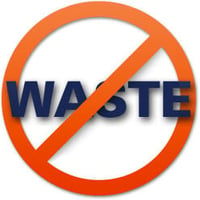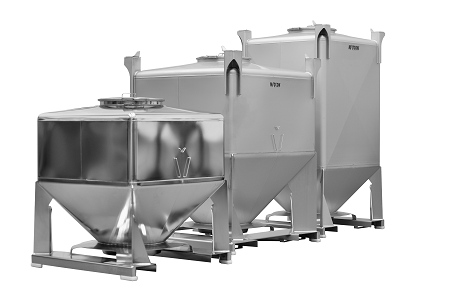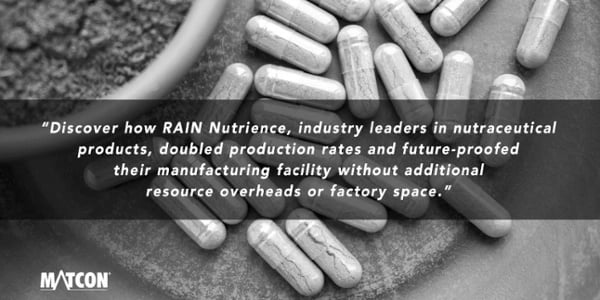With a growing number of allergen sufferers worldwide and increased awareness of the health risks associated with allergic reactions, consumers and auditing bodies are now holding food processing manufacturers accountable. Failure to manage allergens effectively can not only be life threatening for the end user but will also create reputation and operational damage to an organisation. At its worst, failure to effectively manage allergens could result in factory closures and legal proceedings.
In recent years there have been a number of high-profile cases that highlight the disastrous consequences of mis-labelling, cross-contamination and inaccurate handling of allergens within the food industry.
Allergen control has never been more important and should always be considered. The ability to handle a range of ingredients in a safe, efficient way has also become a huge benefit to businesses that manufacture a range of batch sizes and recipes.
If you handle powders that contain allergens, read on to discover how you can become better equipped to safely handle and transport powders, increasing flexibility within your manufacturing process.
The Growth of Allergen Awareness
The ‘allergen free’ market used to make up a small sector of the food industry with only a handful of products available. Today, there are countless shelves of ‘allergen free’ goods available. But why the increasing number of ‘allergen free’ products and allergen awareness? In short, it’s a combination of things; increases in population mean a greater number of allergen sufferers, a fundamental upsurge in allergen intolerance has increased demand and legislation enforcing food labelling demands greater transparency and control over allergen and lifestyle choice containing ingredients.
Key Statistics:
“More than 150 million Europeans suffer from chronic allergic diseases and the current prediction is that by 2025 half of the entire EU population will be affected (EAACI, 2016)”
“A staggering 44% of British adults now suffer from at least one allergy and the number of sufferers is on the rise, growing by around 2 million between 2008 and 2009 alone” (Mintel, 2010)
“Almost half (48%) of sufferers have more than one allergy” (Mintel, 2010)
“In the 20 years to 2012 there was a 615% increase in the rate of hospital admissions for anaphylaxis in the UK” (Turner, Paul J, et al, 2015)
“Worldwide, sensitisation rates to one or more common allergens among school children are currently approaching 40%-50%” (World Health Organisation)
Getting the basics right
To efficiently and safely handle powder ingredients used in food manufacturing, it is important to consider how changes across the production line can have a huge impact upon your process.
- Labelling - clearly stating what exactly is in your products
- Where and how you store your ingredients and final products
- How you handle and process allergen and non-allergen containing products
- Appropriate equipment to handle ingredients
The Opportunity
The seriousness of allergen control cannot be denied, but for savvy food manufacturers who can meet market and legislative demands, there’s an opportunity for them to grow their businesses. Allergen control shouldn’t be seen as just a health and safety exercise, it’s an opportunity to become a high-quality supplier in a number of niche, high unit cost product categories.
Allergen Control
So how do you achieve ‘allergen free’ manufacturing without re-inventing your manufacturing processes? In the following sections, we’ll explore the principles and technology needed to safely handle powder recipes that contain allergens.
The Importance of Containment
In food manufacturing, you will inescapably use materials in certain products that must remain isolated from others. For instance, a gluten containing bread mix using gluten-based flour should be kept entirely separate from gluten free bread mix.
The most common causes of cross-contamination on a powder handling production line are:
- Airborne Dust
- Ingredients escaping on discharge
- Open transfer between processing
- Incomplete mixer discharge, leaving behind a residue that could contaminate the next batch if not thoroughly cleaned
- Difficult to clean equipment and poor practices
- Human error during the food production process e.g. mis-labelling of ingredients
Introducing Automation to Remove the Risk of Human Error
“Human error is responsible for more than 80% of defects and problems.”
Human error can be eliminated by adopting new technologies. Bar-coding of ingredients and using RFID (radio-frequency identification) in your process ensures that only the right ingredients make it into each batch. This automated step, removes the risk of human error, a critical step to not only ensure the correct recipe is formulated but the required blending times and cleaning processes are run.

Using IBCs to Remove Allergen risk
For food producers, using Matcon IBCs (Intermediate Bulk Containers) within your production line ensures product consistency, quality, and cleanliness. These sealed, mobile containers are manufactured from stainless steel and come in a range of sizes to meet with the throughput demands of the manufacturer. Ingredients are dispensed into the IBC, which then becomes the mixing vessel on the tumble blender. Following the mixing cycle, the IBC is then placed on a Discharge Station and measured quantities of perfectly blended recipe is fed to the next stage of the production line.
In contrast to traditional manual or continuous production lines, the IBC itself is moved between production processes, eliminating a series of emptying and refilling stages where there is the potential for allergen or cross-contamination.

How IBC Tumble Blending Helps Food Manufacturers’ Reduce Allergen Risks
Tumble blending is often a crucial area of contamination risk due to tipping, mixing and the creation of a dust rich environment. In comparison, IBC-based production lines use the IBC as the actual blending vessel, therefore there is no product in contact with the blender. Consequently, the blender doesn’t have to be cleaned between recipe changeovers as only the IBC (which is taken off-line) will need to be washed with water or air.
IBC tumble blender manufacturers can achieve highly flexible manufacturing enabling them to create a variety of recipes, whether allergen containing or not. Batches can be mixed one after the other in IBCs permitting almost instant changeovers and none of the other process stages need to be halted. The blender itself can go straight back into action with another batch, resulting in minimal downtime.

Automatic and Controlled Discharge Using Cone Valve Technology
Patented, precision-engineered Cone Valve technology, unique to Matcon, ensures that when ingredients are discharged from a container, they are emptied in a completely dust-free way. This enhances the efficiency of your production line by reducing cleaning requirements, and – unlike butterfly valve-based IBCs, in which product can become ‘stuck’, this eliminates the potential for ingredients and allergens to escape or be left behind ensuring your product yield is not reduced.
Where necessary IBCs dedicated to the production of a particular recipe ensures that no cross-contamination between product lines can occur – so food manufacturers can safely produce goods containing allergens in the same facility as those containing fewer sensitive ingredients. As discussed Tumble Blending also reduces downtime as the blender does not need to be cleaned in between recipes, and can in fact be used for a variety of batch sizes and recipes being produced.
In this article we’ve looked at the health risks posed by contaminated allergen containing ingredients and proposed methods that will ensure you can improve flexibility, reduce downtime and ultimately improve OEE and manufacturing line throughput.
Posted by
Matt Baumber
